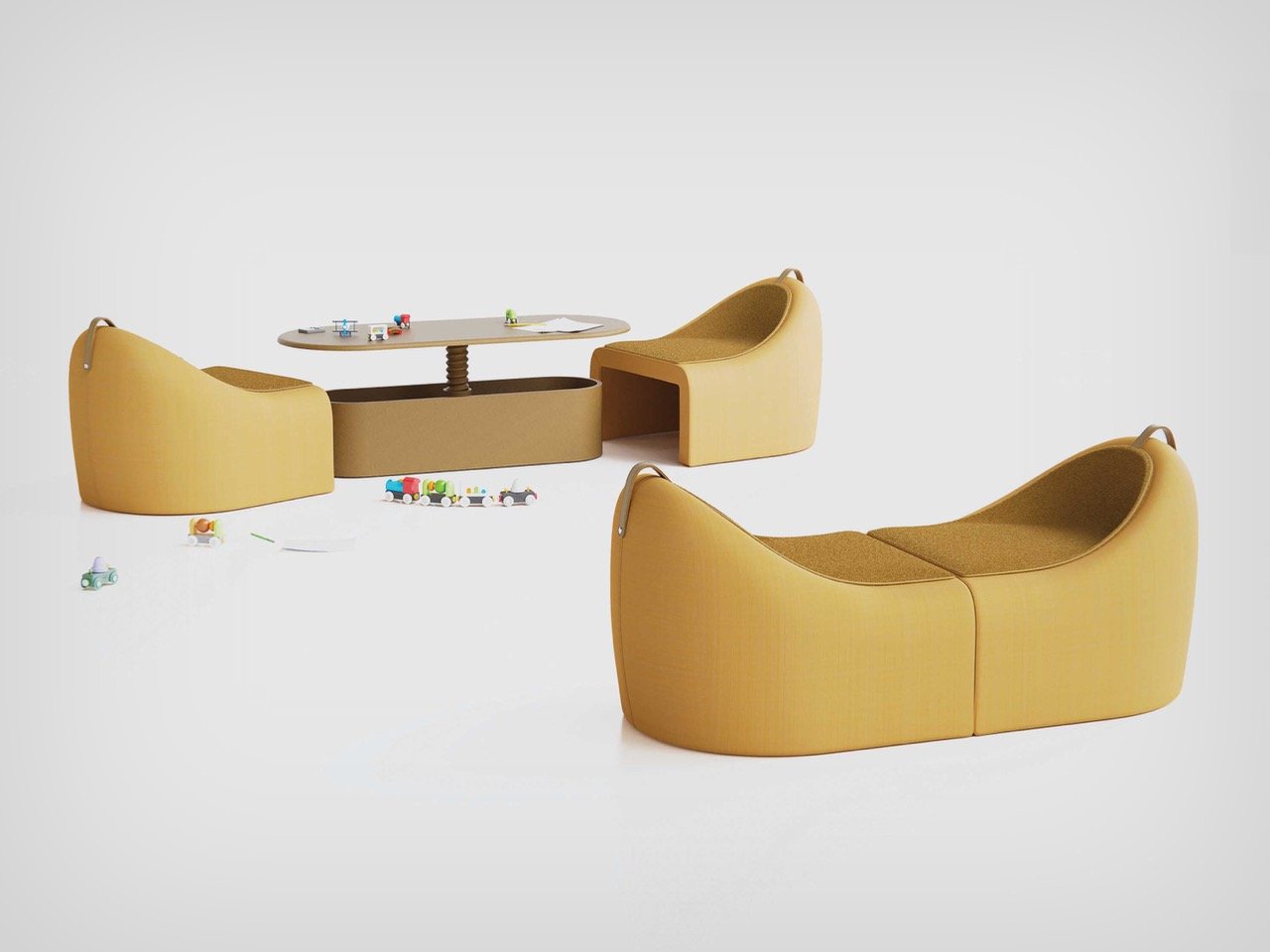What if your sofa could turn into a secret clubhouse, an art studio, or a nap zone, all before lunchtime? Twiny, the latest Red Dot Award: Design Concept winner, is making that dream a reality for children (and their parents) everywhere. The modular furniture system just picked up one of the industry’s most prestigious honors, and honestly, it’s easy to see why. Twiny combines the kind of playful transformation kids naturally crave with the space-saving pragmatism that urban parents desperately need. And it does this while actually looking good, which is a rarity in children’s furniture.
Red Dot’s “Best of the Best” designation for Design Concept isn’t handed out lightly. The award targets ideas that push boundaries, and Twiny manages to do that by treating kids as active participants in their environment rather than passive recipients of adult-designed spaces. The two-piece sofa splits apart to reveal an adjustable-height table and built-in storage compartments, turning a lounging setup into a fully functional activity zone in seconds. What makes this clever is that the transformation itself becomes part of the play experience. Kids love discovering hidden things, and Twiny essentially gamifies the act of reconfiguring furniture.
Designer: Nurettin Badur for Ziel Home Furnishing Technology Co., Ltd.
Twiny’s interior uses 100% recycled polyester, and the adjustable table is made from a composite of recycled wood and recycled plastic. These aren’t token gestures toward sustainability. Using post-consumer materials in upholstered children’s furniture is still relatively uncommon, especially when you factor in durability and safety standards for daycare and kindergarten environments. Twiny manages to thread that needle while keeping the design visually appealing across a range of pastel and saturated color options. The rounded, soft forms eliminate sharp edges entirely, which matters when you’re dealing with toddlers who treat furniture like an obstacle course.
What separates Twiny from typical convertible or modular furniture is its user-first approach. Most dual-purpose designs prioritize adult convenience, folding tables or flip-out beds that require strength or specific knowledge to operate. Twiny hands control directly to the child. The separation mechanism is intuitive enough for preschoolers to manage independently, which fosters decision-making and spatial reasoning in ways that static furniture simply can’t. The storage compartments sit at kid height, making cleanup less of a chore and more of an extension of play. That’s a psychological win as much as a functional one.
Twiny arrives at a moment when flexible living spaces are becoming the norm rather than the exception, particularly in dense urban markets. The ability to shift a single piece of furniture from story time to snack time to craft hour addresses a real problem without requiring parents to buy three separate items. It scales with the child’s developmental stages too, thanks to the adjustable table height. That kind of longevity is rare in children’s products, which tend to get outgrown and discarded faster than you can say “minimalism.” Twiny’s recognition by Red Dot validates what good design should always aim for: utility that feels effortless, sustainability that doesn’t compromise aesthetics, and interaction that sparks joy.
The post The Twiny Sofa Hides a Secret Table Inside That Kids Can Transform Themselves first appeared on Yanko Design.

